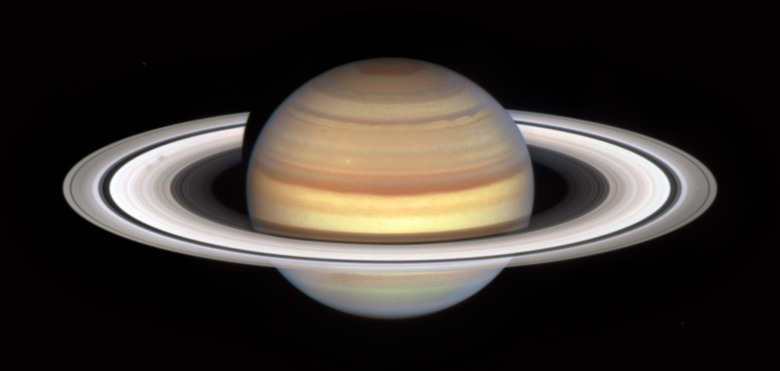An Unidentified Object Might Have Just Crashed Into Saturn
A bright flash on Saturn was captured by NASA's Mario Rana on July 5, 2025. This marks the first time we've ever seen an object crash into the ringed giant in real time. Now, astronomers around the world are scrambling to verify what could be a rare and historic planetary event.
Rana, a volunteer with NASA's Planetary Virtual Observatory and Laboratory (PVOL), was imaging Saturn when the sudden burst of light appeared. The flash occurred at around 09:00 UTC and stood out sharply against the planet's typically uniform cloud bands. PVOL quickly shared the footage of the object that crashed into Saturn and issued a call for help from the astronomical community to see if anyone else had captured similar footage or images of an object crashing into Saturn.
But impacts on gas giants like Saturn don't leave behind smoking craters or visible scars. Unlike Earth or the Moon, which wear their collisions like badges of honor, Saturn's thick atmosphere of hydrogen and helium swallows evidence fast. Any disturbances quickly blend into the turbulence of the planet's outer layers, making it extremely difficult to prove a collision occurred without corroborating footage.
While massive objects over a kilometer in size are believed to hit Saturn only once every few thousand years, smaller meteoroids likely collide with it much more frequently. Cassini mission data once uncovered ripples in Saturn's rings that researchers believe were caused by objects crashing into the planet, revealing that the planet's outer halo can act like a cosmic seismograph.
What makes this event exciting is that, if confirmed, it would be the first time an object crashing into Saturn has ever been directly observed. Past detections of impacts on gas giants have mostly involved Jupiter, where dark impact scars or heat signatures were easier to detect. Until now, Saturn has eluded such direct visual proof.
That's why PVOL's call for additional footage is so important. Astronomers — both professional and amateur — who happened to be watching Saturn that morning could help confirm the flash wasn't a fluke, a cosmic ray artifact, or an imaging error. With multiple observations, researchers could triangulate the flash and better estimate the size of the object that crashed into Saturn, as well as the impact energy it created.
